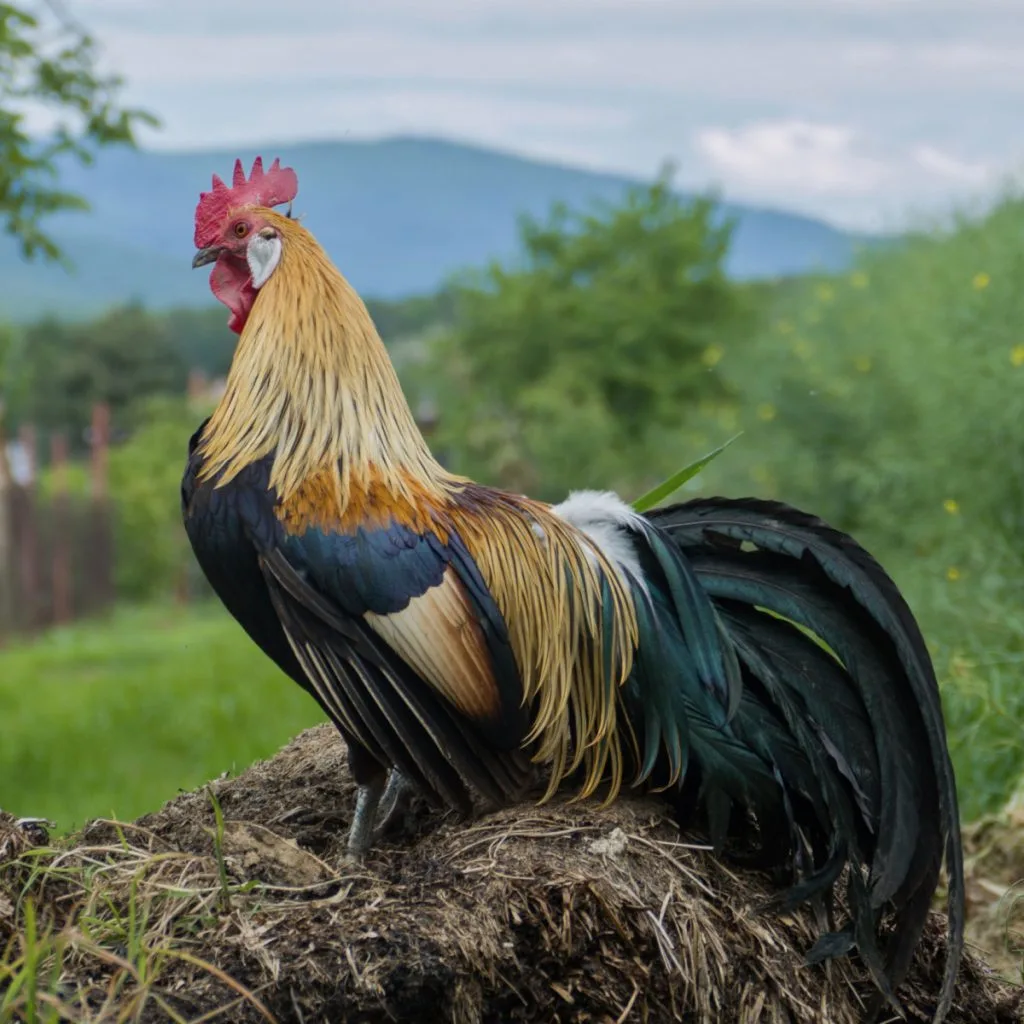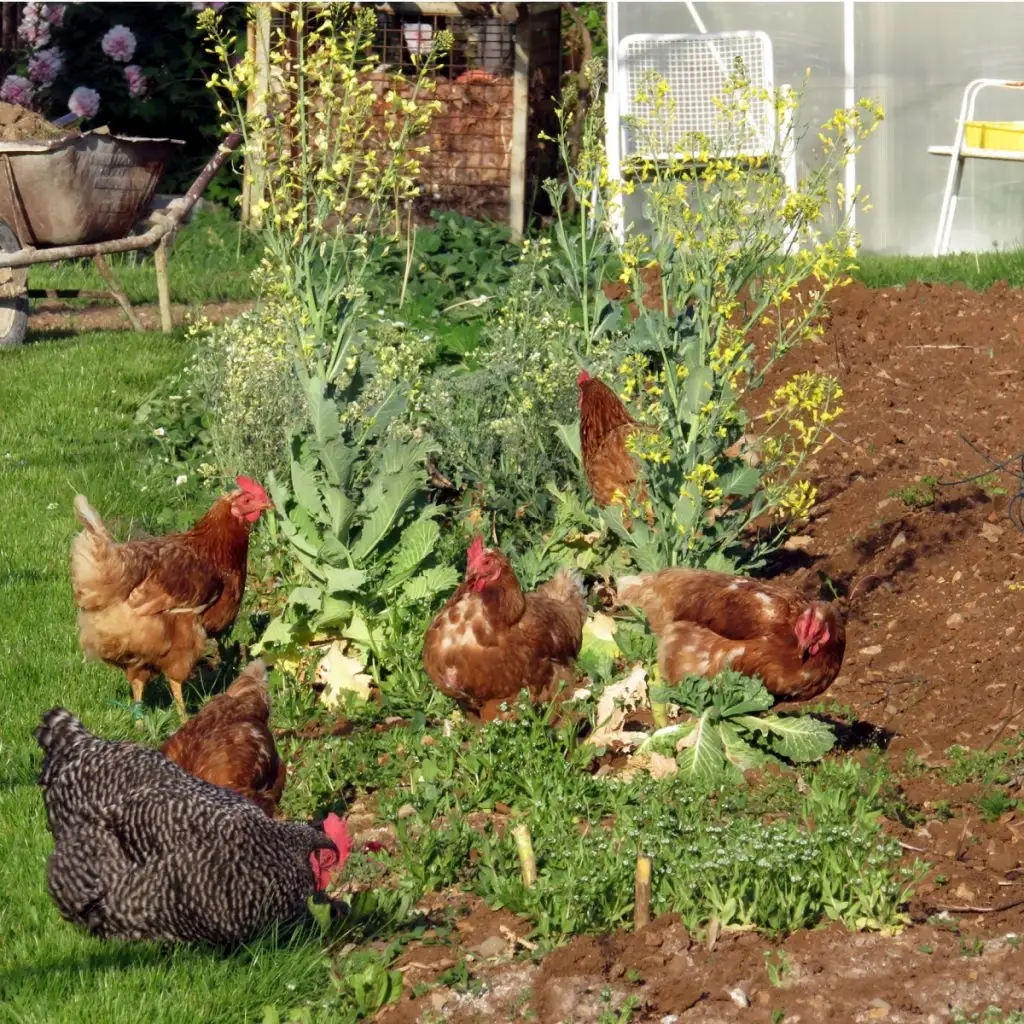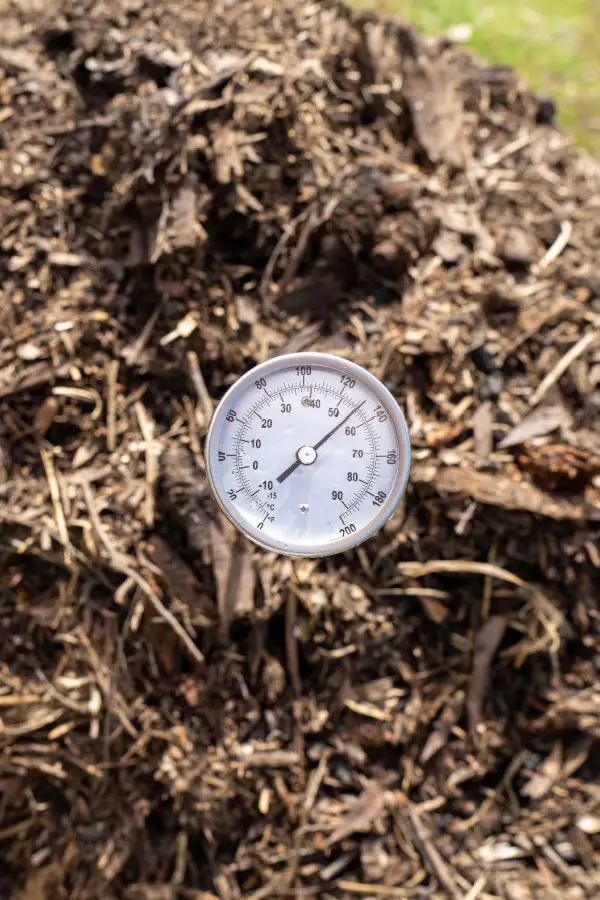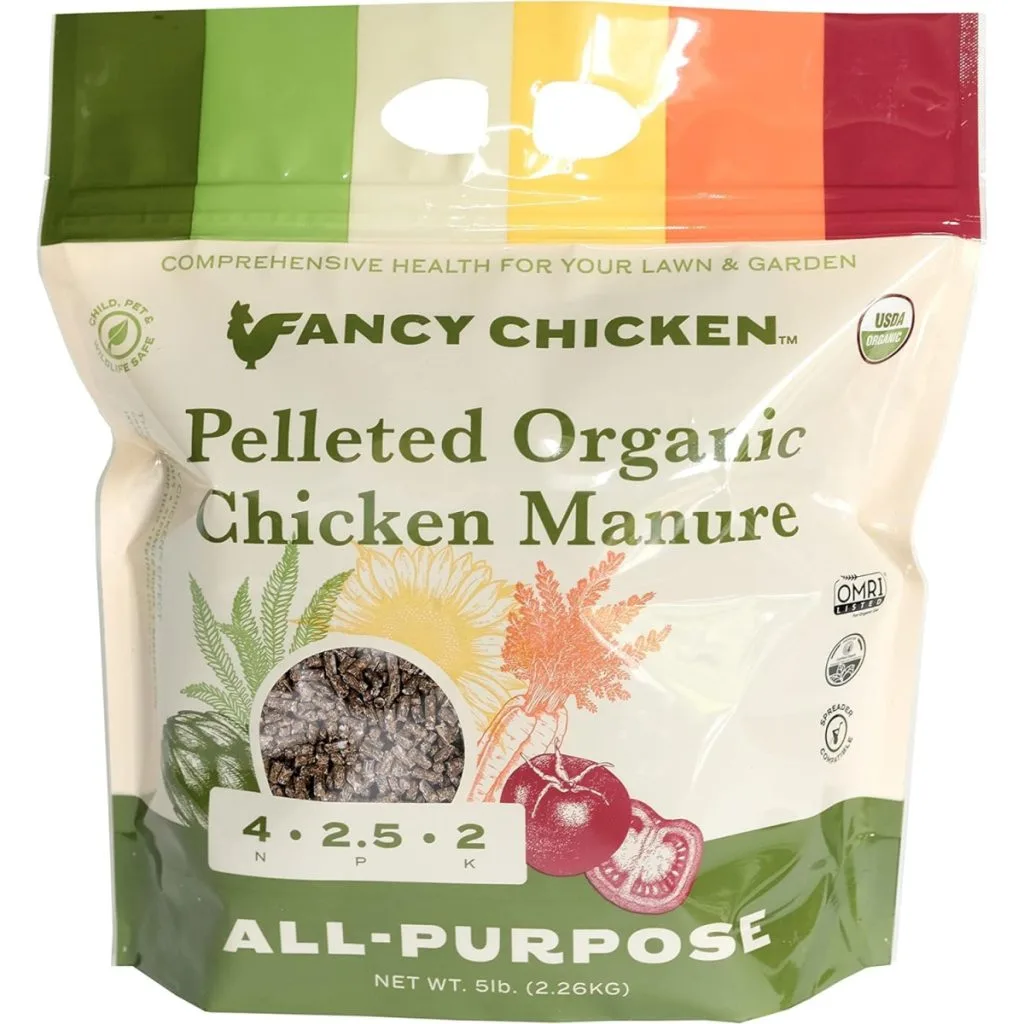Looking for the best way to safely use chicken manure to recharge and power your garden soil and plants?
With more and more gardeners raising a few backyard chickens – or having close neighbors doing so – the availability of chicken manure is certainly soaring. And can that manure ever help to revitalize and rejuvenate tired garden soil!
Chicken manure can not only provide your garden soil and plants with amazing nutrients, it can do so for free. Especially if you happen to have your own backyard flock of chickens. But one thing is for sure – it’s important to know how, when and where you can use it in your vegetable garden to keep you and your plants safe!

Most importantly of all – chicken manure, when used properly, is an incredibly safe way to power your garden. Apply it correctly and it can help your plants grow better and increase yields. But use it wrong, and it can harm the plants growing in your garden and even make them unsafe to consume. The good news? It’s actually very easy to use in a totally safe manner – and in three great ways!
The Best Way To Use Chicken Manure Safely
It’s truly amazing just how much raising a few backyard chickens can improve your garden. Not only because of the manure they can provide to power your garden, but how much they can help with weeds, pests and more! See our article: How Chickens Can Eliminate Ticks
Chicken manure offers an incredible array of nutrients for your garden and plants. In fact, it consists of more than ten essential plant nutrients. At the top of the list are the big three of Nitrogen, Phosphorous and Potassium.
These 3 nutrients are the basis for nearly every man-made fertilizer around. Nitrogen is key in promoting strong foliage and plant growth. Phosphorous is extremely important for blooms and fruiting. Meanwhile, potassium helps a plant to stay strong and vibrant, and is big in protecting against disease.

Together, the powerful combination of all three can energize plants and soil. But plants need other nutrients and trace elements to survive and thrive. And it just so happens, chicken manure also contains those as well – in the form of Calcium, Sulfur, Copper, Zinc, Iron, Manganese, Magnesium and more.
Even better, chicken manure releases those nutrients slowly as it breaks down. That means it keeps the soil fertilized for a longer time, whereas man-made fertilizers need to be applied more often. Last but not least, as it breaks down, it adds high levels of humus, building better soil structure in the process.
3 Ways To Best Use Chicken Manure In A Vegetable Garden
Chicken Manure Compost
The most common and easiest way to use chicken manure in the garden is as a compost/fertilizer. Fortunately, turning chicken manure into incredibly powerful compost is a simple process. This is not the same as adding to a compost pile, but making an entire pile from chicken manure and the bedding.
Of course, it’s important to note, whenever you work with any manure or bedding, always take appropriate safety precautions. A dust mask and gloves can help keep you safe from any harmful dust – and a lot cleaner too!

Begin by collecting the shavings, straw and the manure. You want your pile to consist of about 1/3rd manure and 2/3rds bedding or straw. If there is too much manure, you can add additional straw or even grass clippings to get the right ratio.
When building your pile, try to alternate layers of the manure and bedding, straw or grass clippings. Doing so will generate more heat quickly. To keep the pile manageable, build it to a size of about 3′ x 3′ x 3′. This will be large enough to create good heat, but not too large to work.
Keeping The Pile Hot
The internal temperature of the pile will increase quickly. You can turn and mix the pile weekly to keep it composting hot. Repeat this process for at least 5 to 6 weeks to allow the pile to break down. After that, allow the pile to sit and cure for thirty to sixty days.
It will continue to break down and when it is ready, it will smell fresh, more similar to soil. At this point, the manure compost can be used in the garden!
While adding manure compost to your vegetable garden, you can spread it over the entire garden area to power plants and build soil. If putting around plants, keep a few inches away from the stem to avoid overpowering the plants.

2. Chicken Manure As A Side Dressing
Side dressing with chicken manure is another great way to use it – especially when it comes to powering plants. But it is very important that the manure is aged a bit first. When using it for side dressing, complete composting is not required.
One thing is certain, fresh chicken manure should not be used in an active vegetable garden. It should be aged for at least four to six weeks before application as a side dressing. Fresh manure can contain bacteria that can be harmful to you and your plants. It can also be too hot with nutrients and burn your plants.
When applying partially aged chicken manure as a side dressing, place the manure about 8 to12 inches away from the plants. You can place it beside plants growing in rows or in a ring around plants. Doing so ensures the plant absorbs the most nutrients from the chicken manure.
Even partially aged chicken manure can burn the plants, so be sure to side dress and not pile up around the plant too close. Apply side dressing early in the growing season before fruit has formed. This will power early growth and keep the manure from being too fresh around vegetables.
Side dressing is perfect for sweet potatoes, peppers, corn, tomatoes, squash, pumpkins and more. The high N-P-K promotes strong growth and good fruiting as well. If you don’t have access to chicken manure, dried commercial chicken manure pellets work great as an alternative. Affiliate Product: All-Purpose Manure – 5lbs Pelleted Dried Organic Chicken Manure

3. Chicken Manure As A Cover Crop
Finally, one of the safest, easiest and most effective ways to use chicken manure is as a cover crop soil builder. The ideal time to do this is in the fall when your garden has completed its growing season. This method builds a lot of nutrients into your soil for the following year’s garden.
After the last harvest of the growing season, apply a few inches of fresh chicken manure over top of the soil. A good rule of thumb is to use about 1 pound of chicken manure for every 1 square foot of garden area. Depending on how large your garden space is, you can mix it into the soil by hand, or till it into the soil.
In this instance, because it will have all winter to mix and age into the soil, you can use fresh manure. You never want to put fresh manure on your soil unless you won’t be planting for at least 3 months. This ensures that by the time you plant, the chicken manure mixes into the soil well, and the acidic nature of chicken manure reduces and will be safe for plants to grow in.
A Few Safety Precautions
While handling chicken manure, whether to create manure, tea, compost, or anything else, it is a good idea to always wear protective equipment. Protective equipment is necessary because chicken manure can contain various bacteria and viruses.
In addition, whether using manure in your garden or not, you should always wash vegetables before use. This will help wash any bacteria and other harmful residues that can be from rain, watering, or present in the soil
Remember that fresh manure should go in the vegetable garden at least 90 to 120 days before planting. Here is to finding the best way to use chicken manure in your garden – and recharging your soil for free this year!
This Is My Garden
Follow Our Facebook Page For Great Gardening Tips And Advice! This Is My Garden Facebook Page
This Is My Garden is a garden website created by gardeners, for gardeners. Jim and Mary Competti have been writing gardening, DIY and recipe articles and books and speaking for over 15 years from their 46 acre Ohio farm. They publish three articles every week, 52 weeks a year. Sign up today to follow via email, or follow along!
